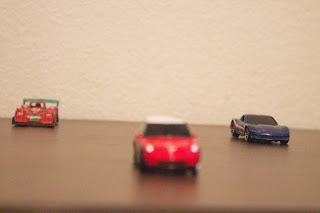Part 1
1. Review the painting example and provide a list of three items that were often seen in painted still life artwork. -Flowers
-Fruits
-Food
2. In your own words, write a paragraph that explains what factors the photographer must consider when doing still life photography.
-a photographer has to consider taking pictures of something that they know will stay still and not move.
3. Why is the Aperture Priority mode on the camera helpful when doing still life photography?
-So you can choose the aperture you want and get better looking pictures.
4. Why is a small aperture sometimes beneficial for still life photography?
-Because it can get more details and make the picture look better.
Part 2
1. Find an example of Stock Photography that interests you and post it to your blog.
2. What is an example of Stock Photography that you could take at your home or in Austin?
- pictures of flowers or local events
3. Who is interested in buying stock photography?
- Magazine companies or other companies that do not have time to take pictures.
4. Why should commercial photographers consider shooting stock photography?
-Because they could make money
Part 3
1. What are some objects that you have that you could arrange for a Still Life shoot?
- toy figures or toy cars
2. What backdrop/background could you use to enhance the emphasis on subject or contribute to setting the scene of the photograph?
-you could use a white background
3. What kind of feeling are you trying to evoke by grouping these objects and background together?
- a feeling of nostalgia like when you were little and used to play with toys.























































